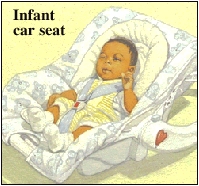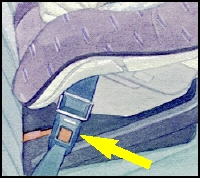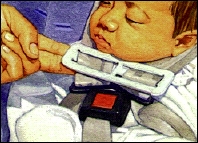Car Safety for Newborns
Car Safety for Newborns
Buckle up your baby each time you go for a drive. It's the law and it's the smart thing to do. Car seats protect your baby in the event of a sudden stop or crash. Always use a federally approved car seat. And follow these tips to be sure baby is buckled up right.
TIP: Support baby's head with a rolled-up receiving blanket. Or use a padded insert made for this.
Choosing a Car Seat
An infant seat is used only rear-facing and can hold a baby that weighs up to 20 to 22 pounds, depending on the model.
A convertible seat can be used both rear- and forward-facing and typically can hold a child that weighs up to 40 pounds
If you are using a second-hand car seat, contact the manufacturer to make sure it was not recalled and to get instructions for using it correctly. Do not use a car seat that is more than 10 years old, has any cracks, or is missing parts.
Placing the Seat
To protect your baby, the seat must be placed in the car properly. Check the car owner's manual and follow all the directions that come with the seat.
Lock the car seat to its base, if it has one.
Place the car seat in the car's back seat. If possible, place the car seat in the middle of the back seat. Position the seat so baby faces backward.
Secure the car seat using the car's lap belt. Check the car seat manual for details.
Never place the car seat in the front seat of a car or truck with airbags.
Buckling Up Baby
Make sure your baby is buckled correctly.
Place the car seat harness over baby's shoulders. Latch the clip between baby's legs. Harness straps should be snug against the body, with room only to fit your finger under the chest strap.
Adjust all the straps so that baby is held snugly in place.
Updated:
March 21, 2017
Reviewed By:
Lesperance, Leann MD,Sylvia ByrdSylvia Byrd RN MBA



